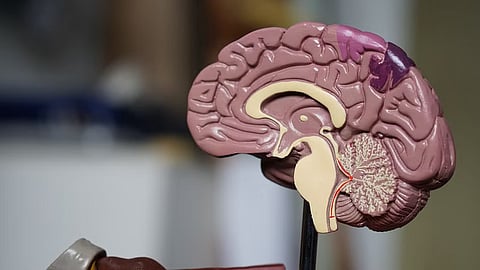Now, the new DBS device in his brain uses wires to helps deliver constant stimulation to keep his focal epilepsy manageable and has reduced his seizure frequency to just a few every month.
Rylan is among less than a dozen pediatric patients and currently one of the youngest at Mott to undergo the procedure, which has more commonly been used in adults.
Sudden symptoms
On New Year's Eve of 2018, then 7-year-old Rylan was playing with his cousins at his grandfather's house when he suddenly zoned out for a couple of minutes and stopped responding to those around him, the Molls quickly decided that something didn't feel right and took Rylan straight to the emergency room.
Neurodiagnostic tests showed no signs of a seizure, unusual brain activity or anything suggestive of epilepsy. Within a few hours, Rylan experienced yet another seizure-like episode.
"He was having what I would think of as a seizure," Alicea Moll said. "His mouth was clenched up, his eyes were fluttering back, he was stiff, and he couldn't move."
Rylan was quickly rushed back to the emergency room where he proceeded to experience multiple seizures that night. Eventually, the emergency room staff suggested that the family be taken by ambulance to University of Michigan Health C.S. Mott Children's Hospital.
At Mott, Rylan was hooked up to an electroencephalogram (EEG) machine. Pediatric epileptologists Sucheta M. Joshi, M.B.B.S. and Kerri L. Neville, M.D. confirmed that seizure activity was taking place in Rylan's brain.


